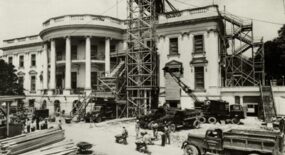Have you ever wondered...
What are the dimensions of the White House?
The Ground Floor, State Floor, and residence floors of the White House are approximately 55,000 square feet. This number does not include the West or East Wings.

A south view of the White House from the air.







































